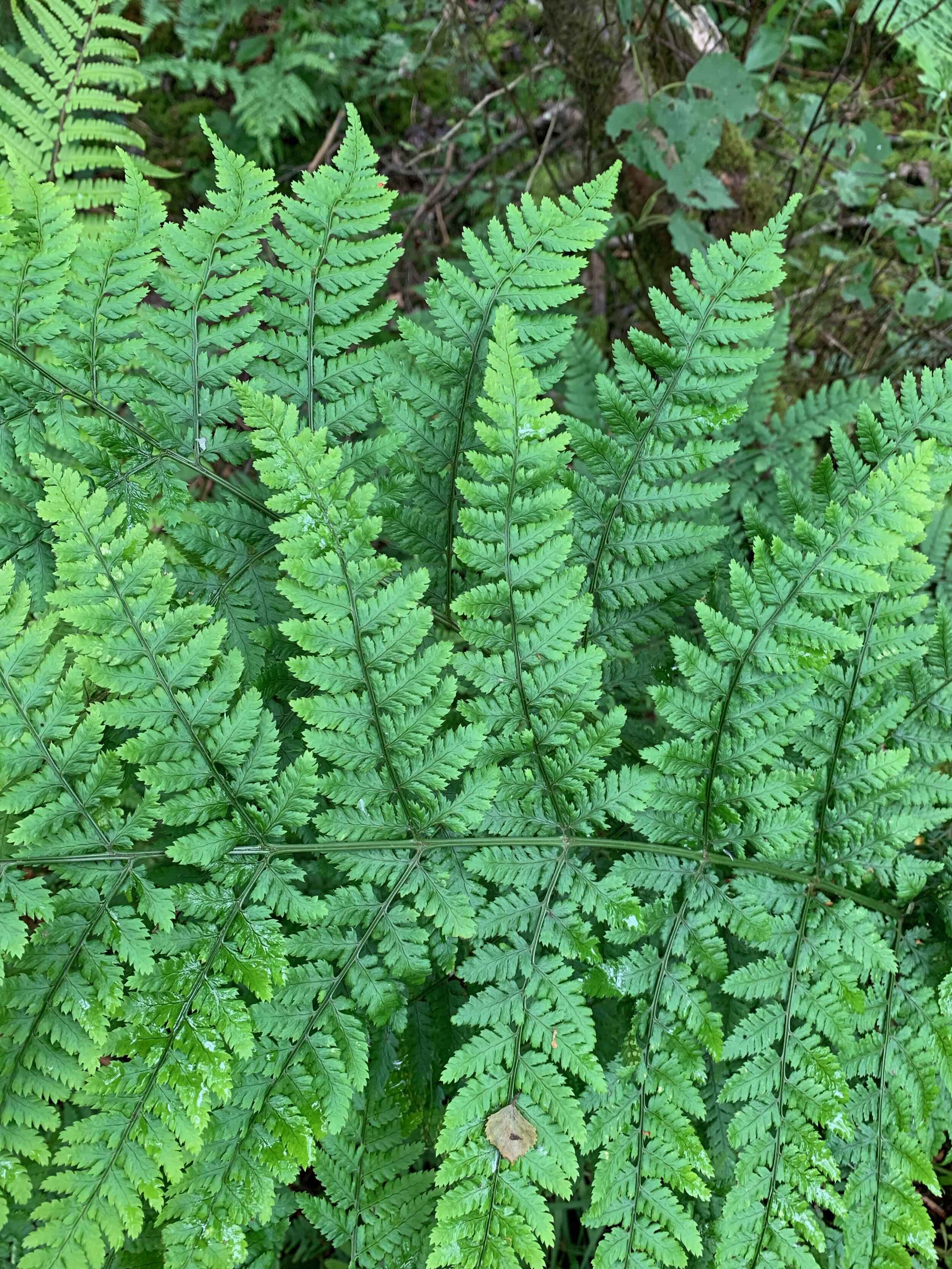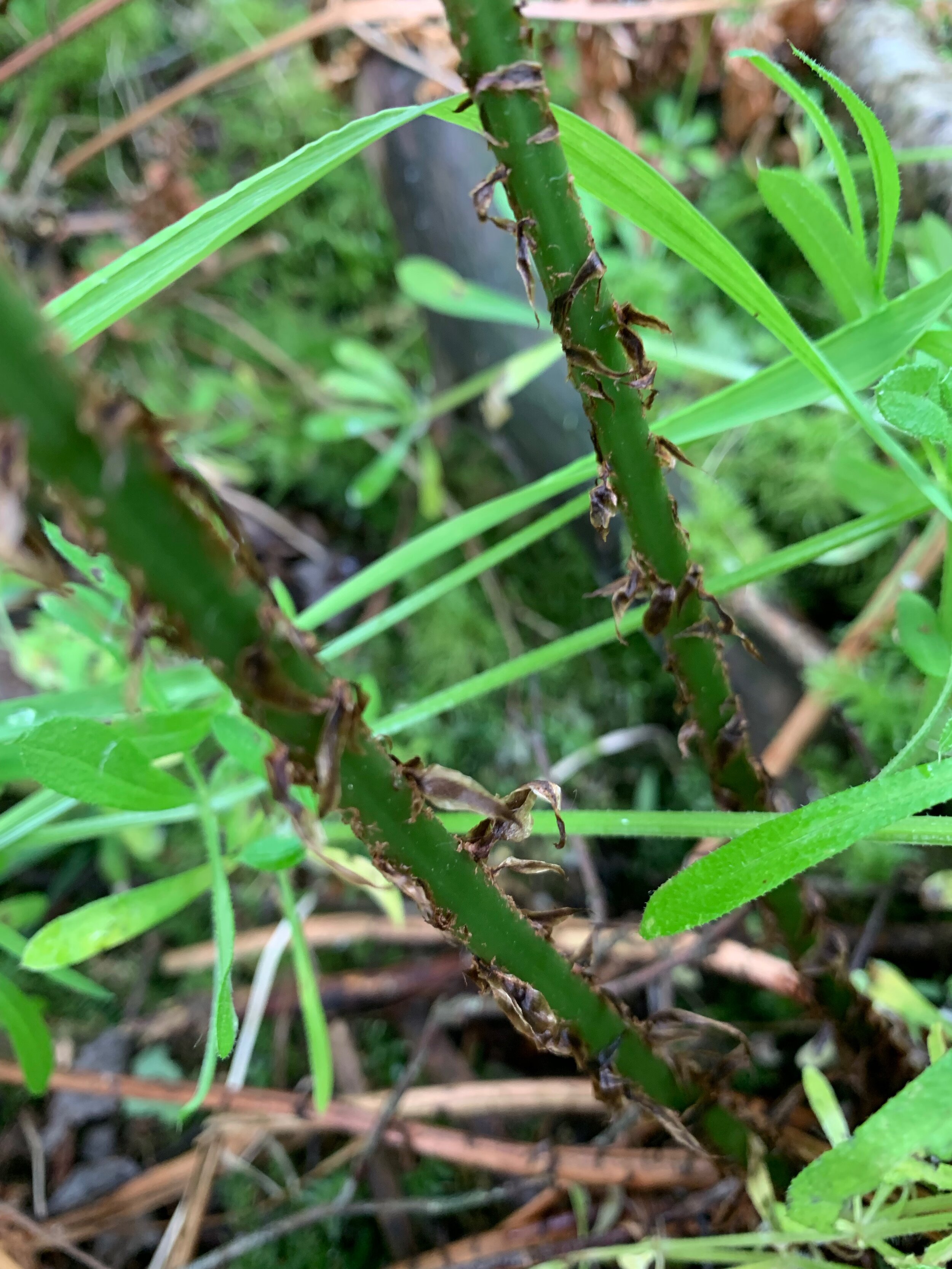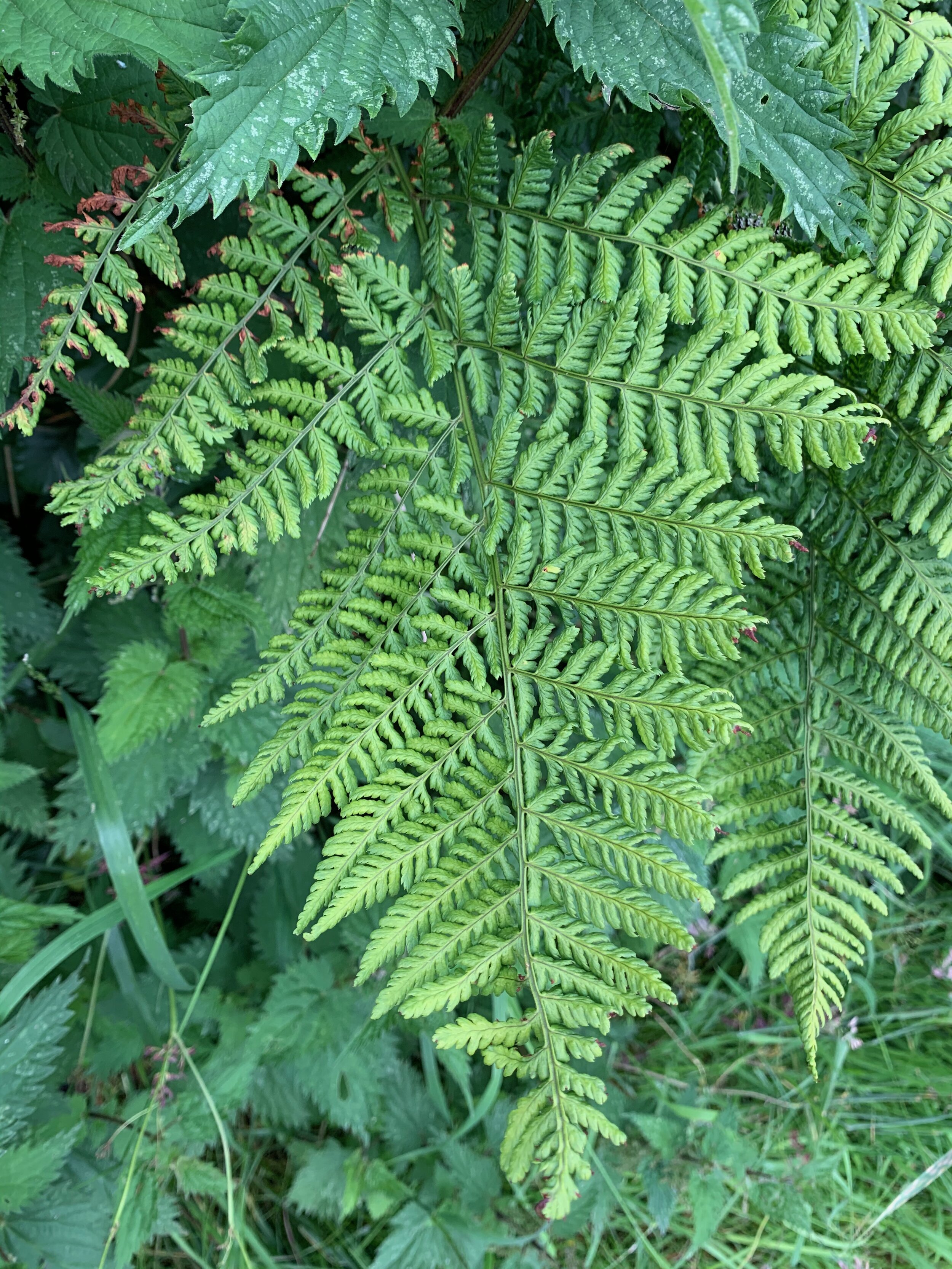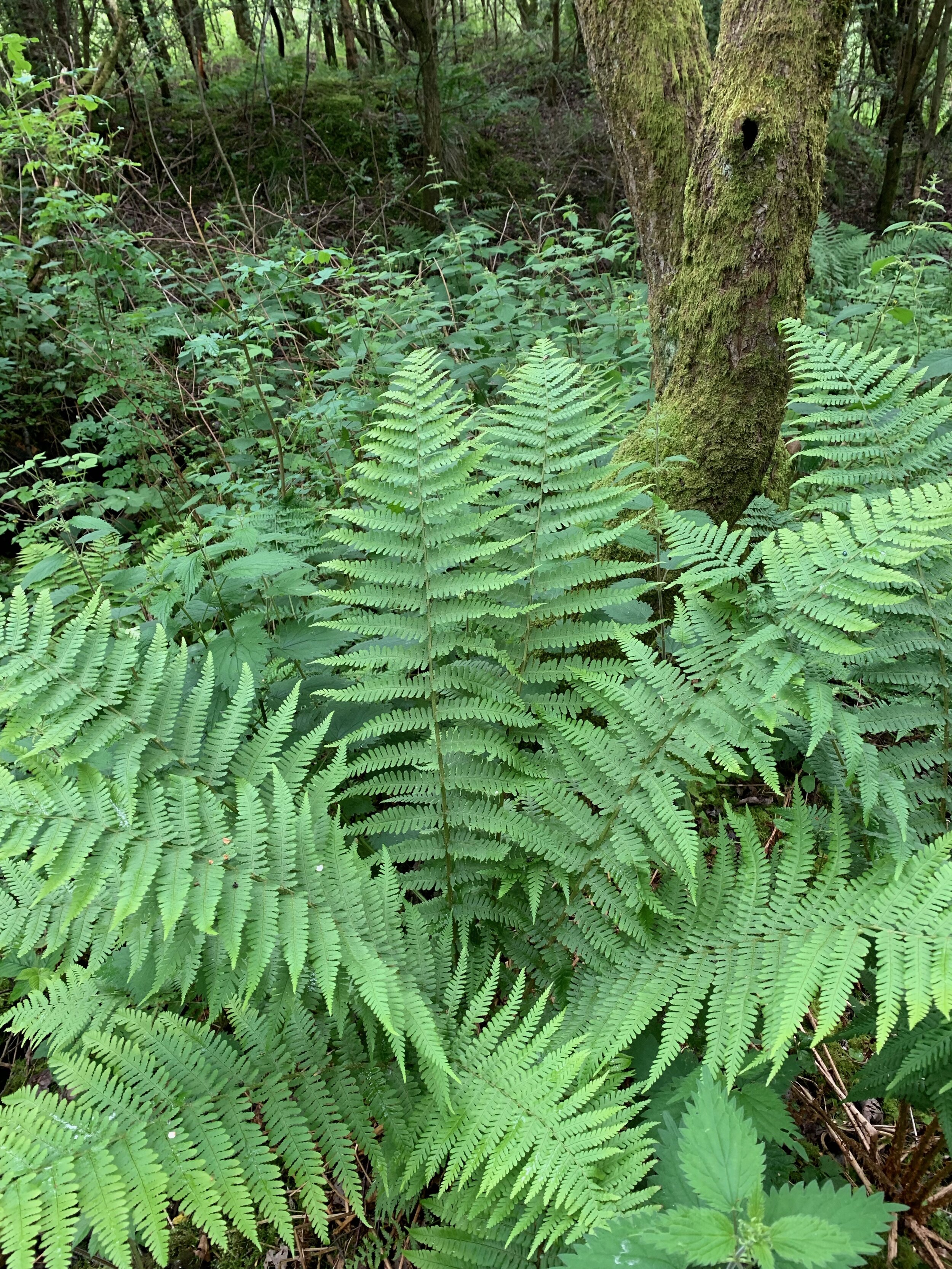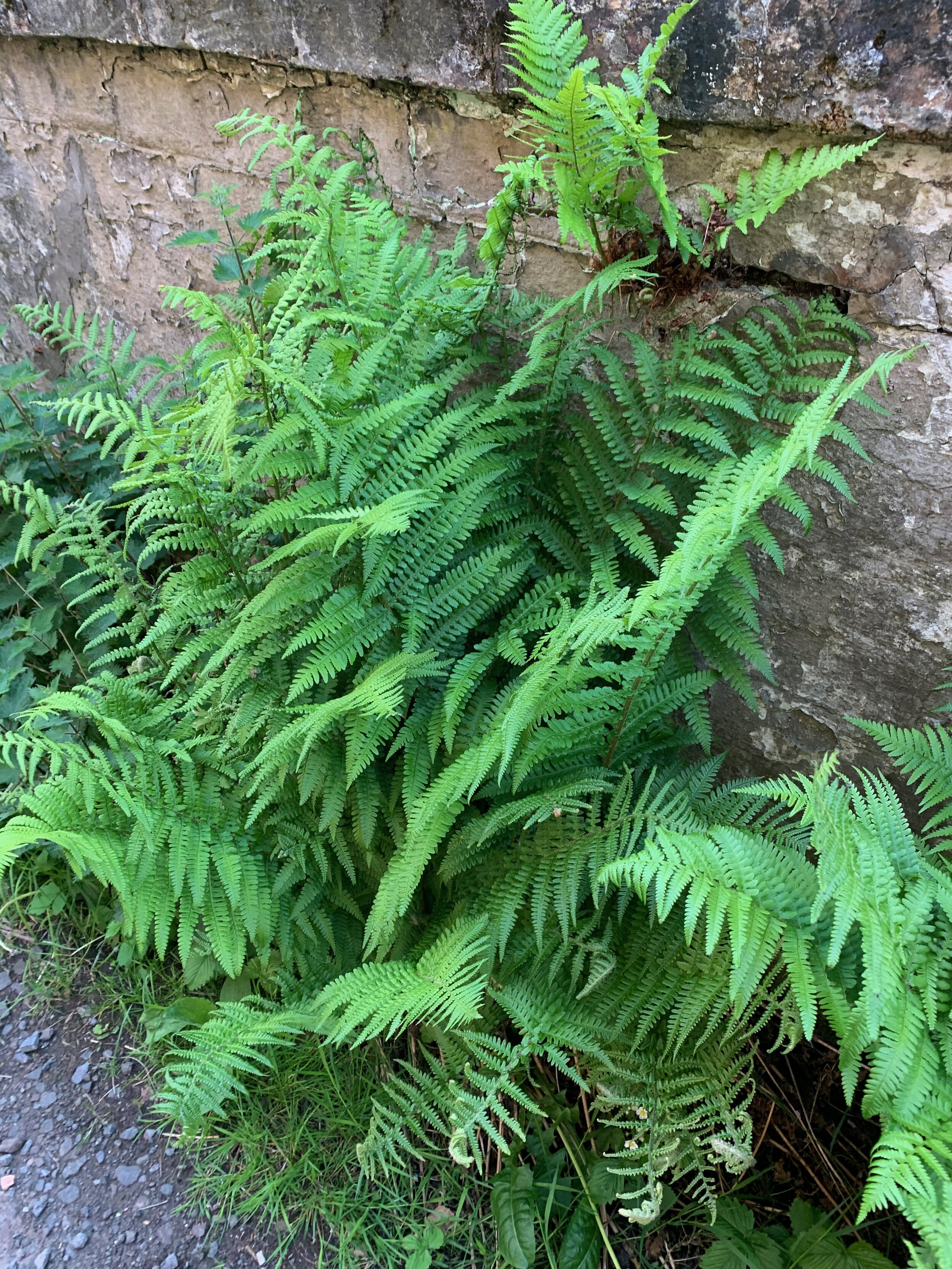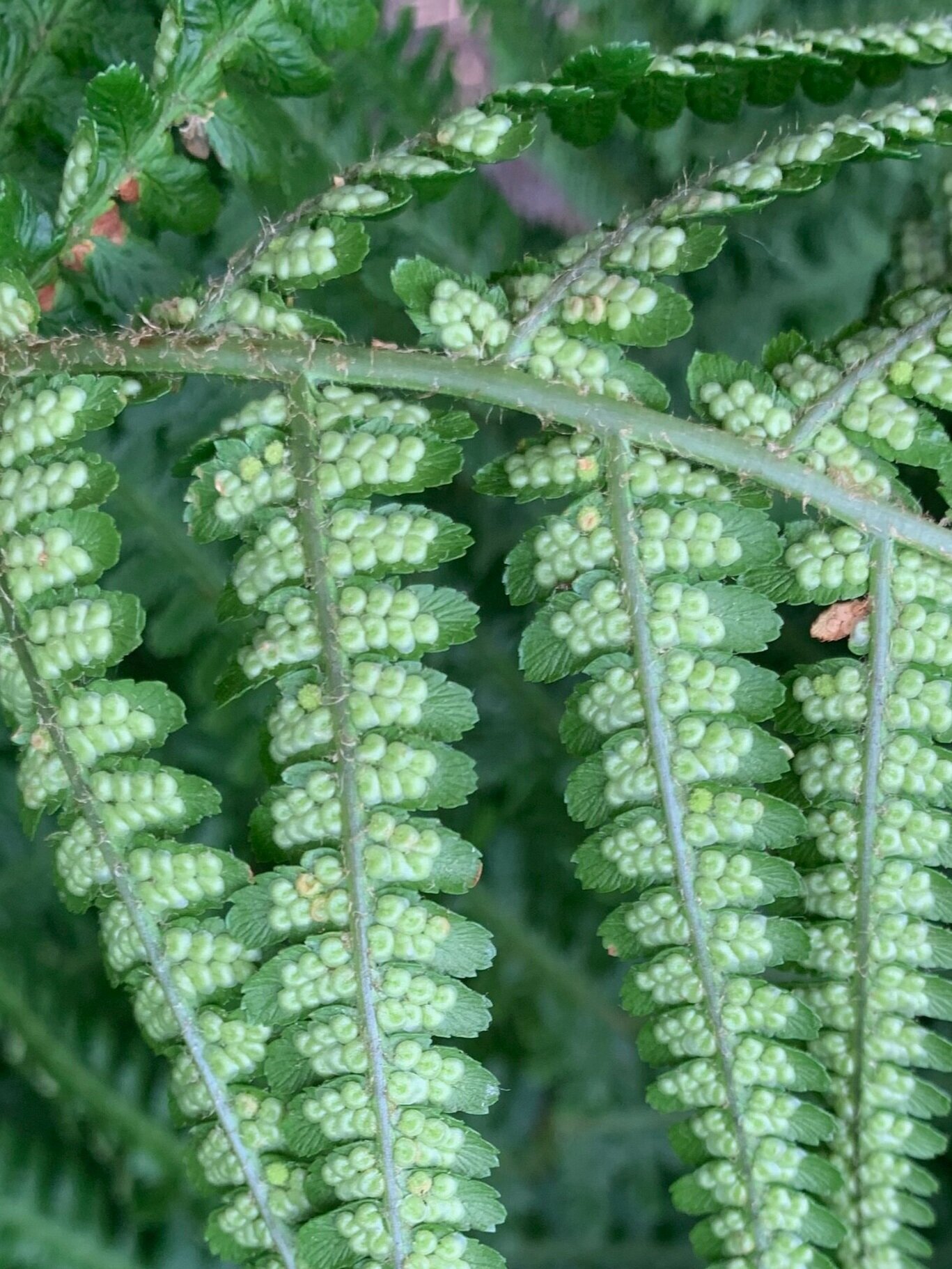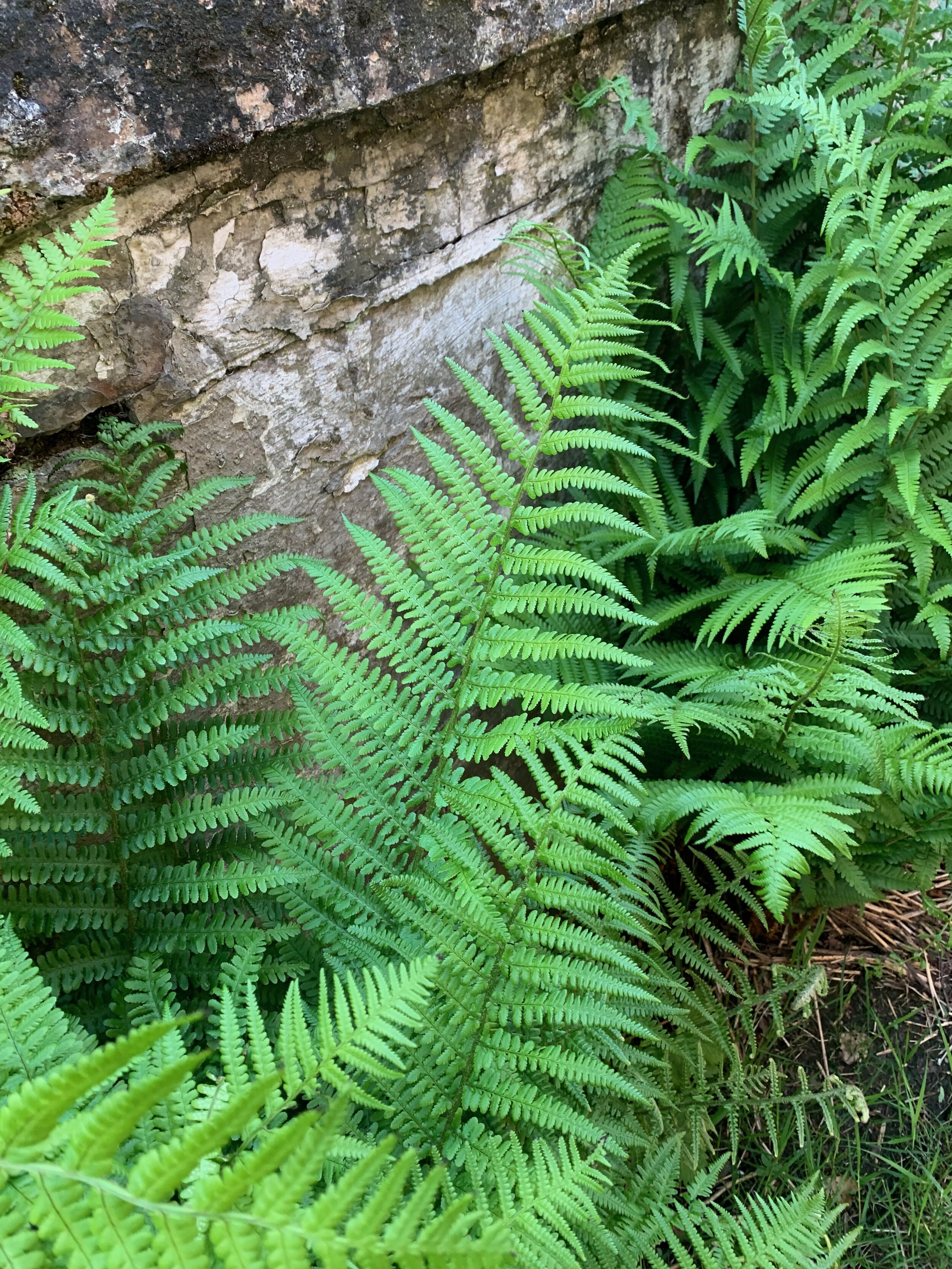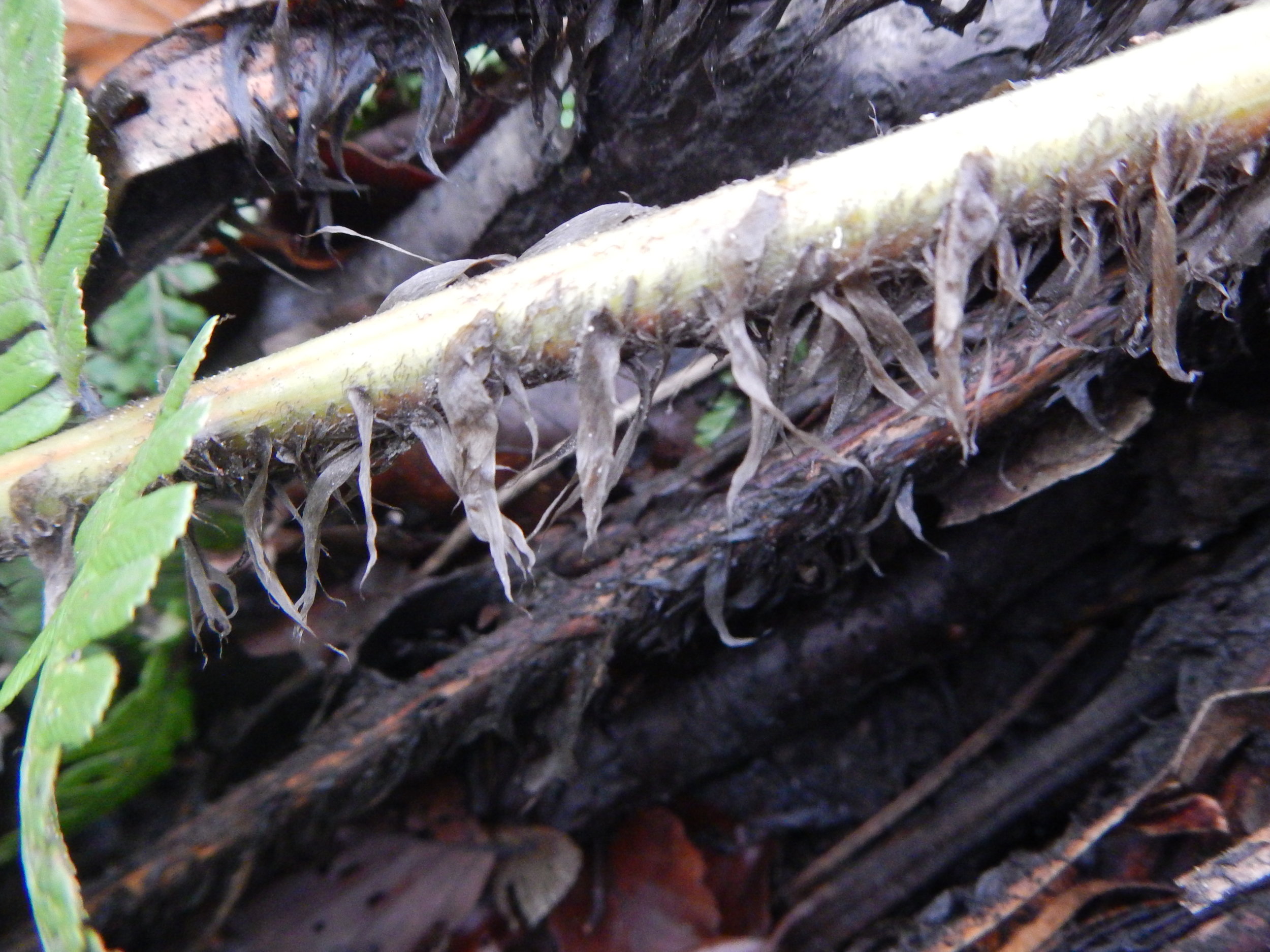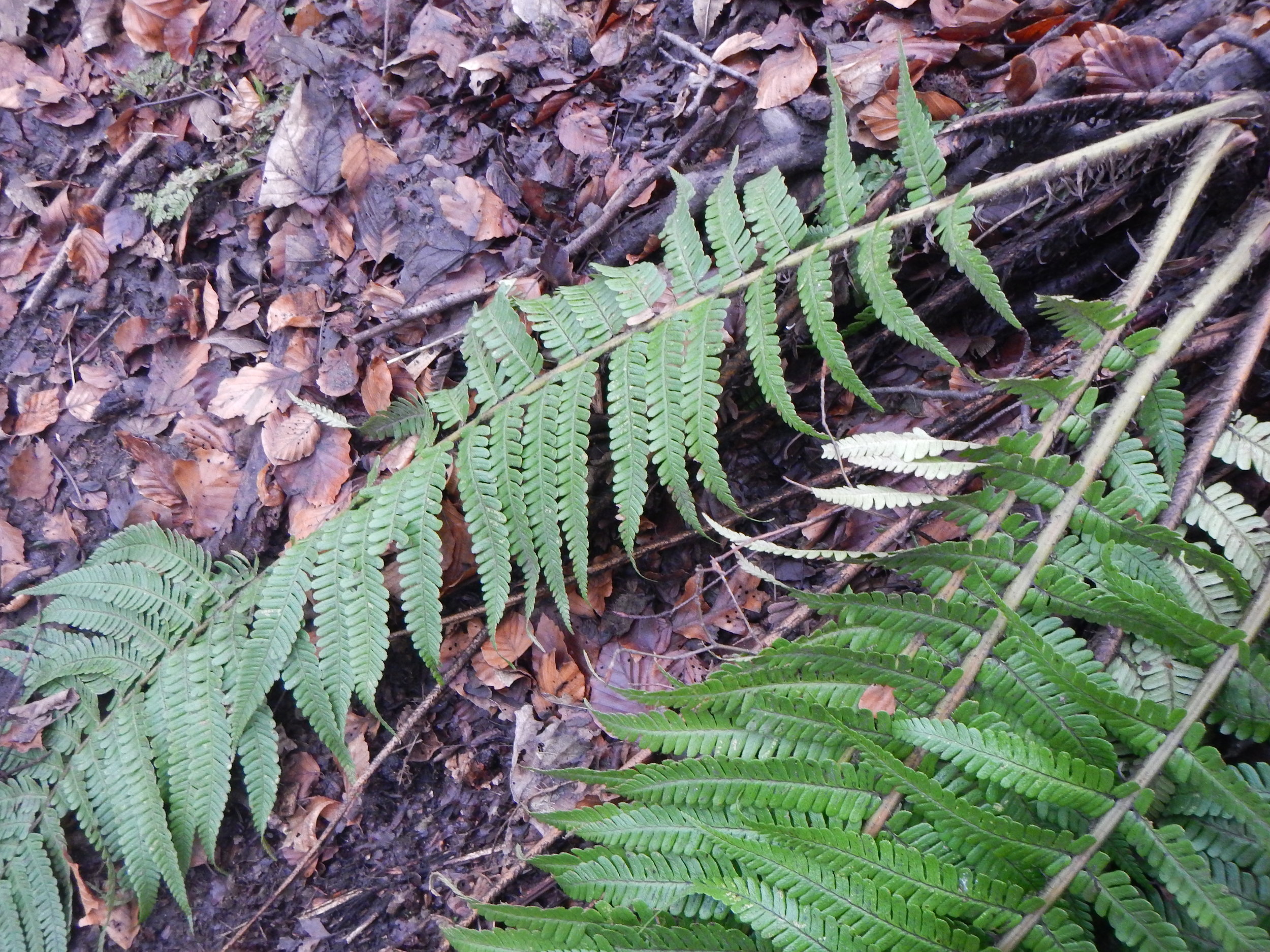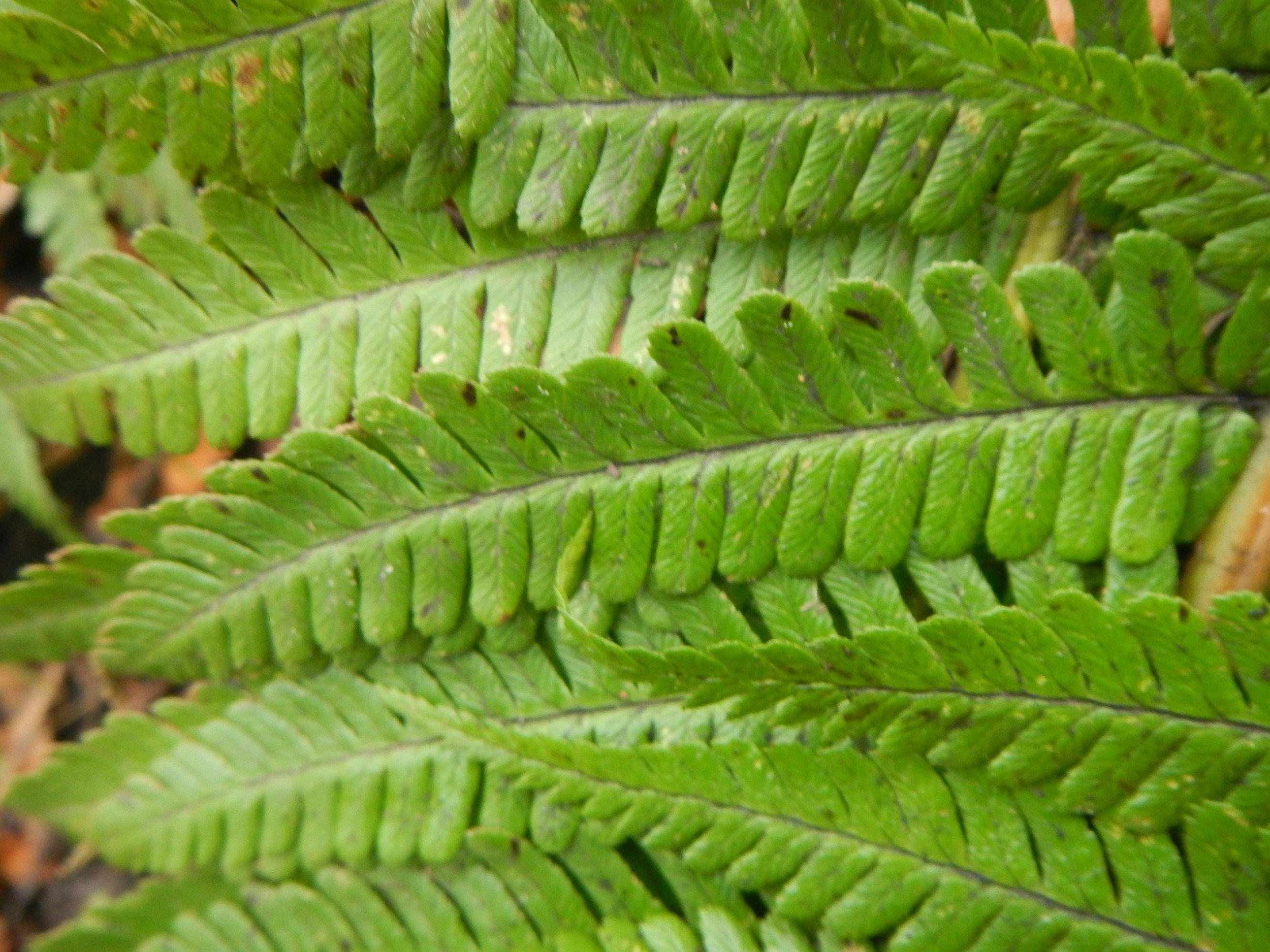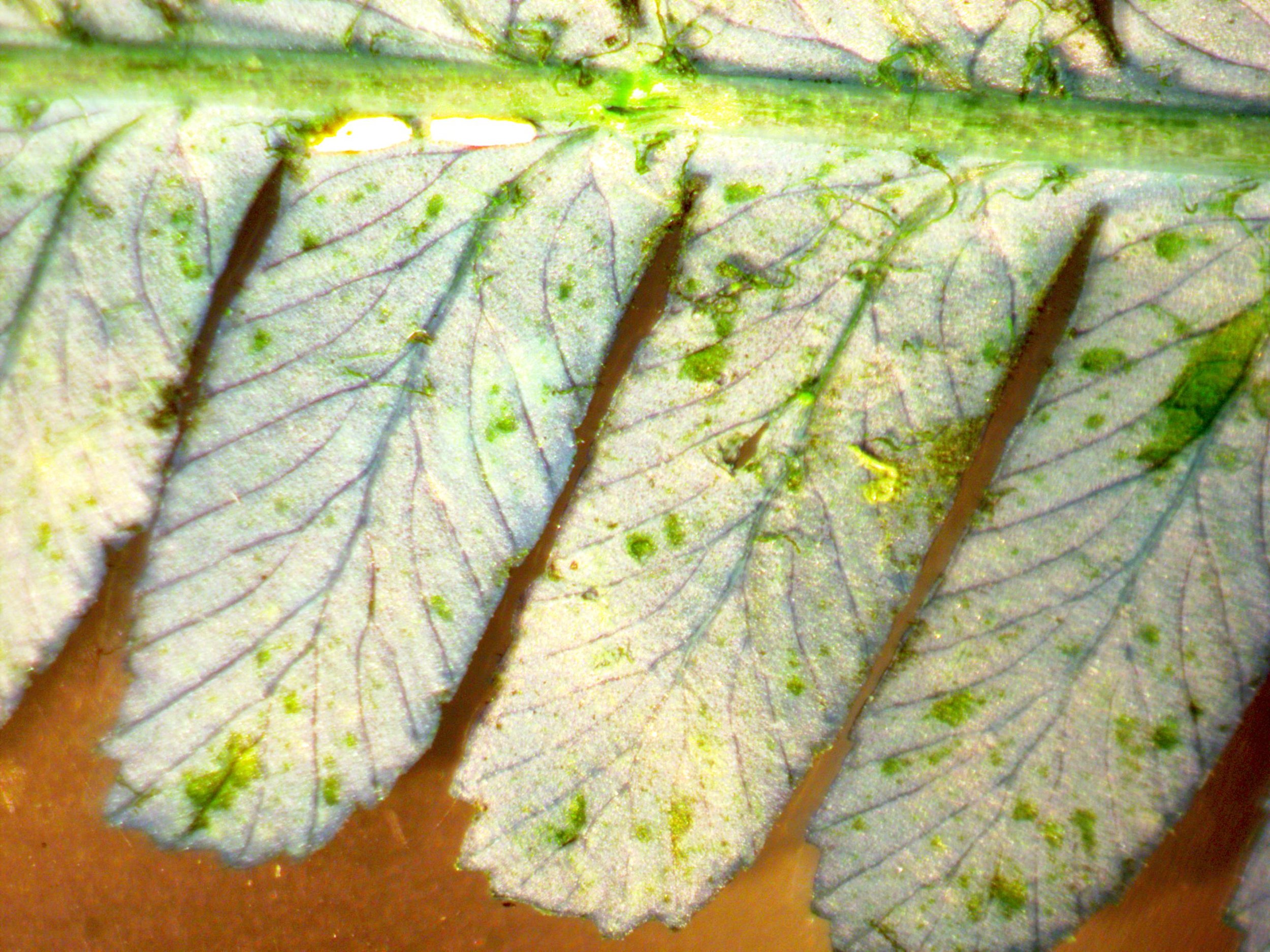Dryopteris species - Buckler Ferns
There are three common species of this group of ferns in Lanarkshire. These ferns all have an unbranched stem (stipe) which bears the frond. The stipe usually has scales towards the base. It has side-branches (pinnae) which are usually further divided once (sometimes twice) into ‘fingers’ (pinnules). These pinnules may have small teeth.
Mature fronds will have spores on the underside, in round kidney-shaped containers (sori) down each side of the pinnules.
Dryopteris dilatata, Broad Buckler-fern, is a common fern of urban woodland. It is easily recognised as the larger branches are 3-pinnate. From the stipe, there is one branch to the pinnae, then each pinnae is branched and each of these is also branched again. The species is confirmed by rubbing some scales off the base of the stipe they will have pale golden borders and a dark brown stripe.
Dryopteris felix-mas, Male Fern, is another common fern. It is usually only 2-pinnate. The individual pinnules are rounded or tend to a sharper point with acute-shaped teeth. Where the pinnae leave the stipe there is no dark mark on the underside. The scales are pale brown or straw coloured with no black stripe.
Dryopteris affinis, Golden-scaled Male Fern, is less common. The stipe is densely scaled with golden-brown scales. The individual pinnules are more rectangular in shape. Where the pinnae leave the stipe there is dark mark on the underside. Unlike the previous two they tend not to die back in the winter. There are three subspecies found in Lanarkshire: subsp. affinis, cambrensis and borreri. There is a simple guide to identifying these subspecies.
Dryopteris carthusiana, Narrow Buckler Fern. This is a pale green and "untidy" fern of marshes and wet Juncus pastures.



